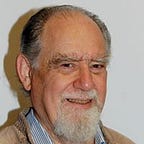Making Macroeconomics a True Science
This past subject has always been taught as if it is a somewhat vague pseudo-science and the way it is usually presented is as a pluralistic, complicated and multi-featured topic about which there are various (confusing) schools of thought. Due to this unsatisfactory situation and due to my ability as an engineer to think and describe such situations in a better way, I was inspired to make a serious attempt to rectify this fault in the past thinking of what was once called “a dismal science”. Actually I find that it was neither dismal nor scientific, merely confused in its previous format. My work in researching this vital subject takes on the basic aspect of this discipline as being presented as a social system, and one that can be better expressed as being a lot more logical and exact that the past humanistic work ever achieved.
By initially describing this topic as a social system, this implies that the way to model it is through taking all of the various kinds of business aspects and placing them into specific classes. This causes them to be considered as being various kinds of agents, each of which and on average acts in its own particular way. This degree of classification reduces the amount of complexity without making the actions that are involved any less definate or unsubstantial. What it does is to reduce the huge amount of repetition were each activity to be treated as being independent.
My research into this kind of thinking necessarily requires a whole new approach to modelling macroeconomics in a logical and consistant way. It requires the use of profound axioms, realistic assumptions, accurate definitions, realistic modelling, logical analysis and (occasionally) sensible judgements.
The result of these thinking approaches to the subject first produced a model of the system which consists of 6 agents or entities and that these are connected by 19 mutual flows of money verses goods, services, valuable documents etc. Then using this presentation in a graphical form, it is possible to argue logically about of what our system really comprises and how it actually works.
An introduction to this research work may be seen as a short working paper SSRN 2865571 “Einstien’s Criterion Applied to Logical Macroeconomics Modelling” which is available through the internet. One of its references is to my 310-page book “Consequential Macroeconomics — Rationalizing About how Our Social System Works” which is available for free as an e-copy.
Kindly send me a message and I will gladly respond by sending it as an e-copy or answering any questions.
chesterdh@hotmail.com
